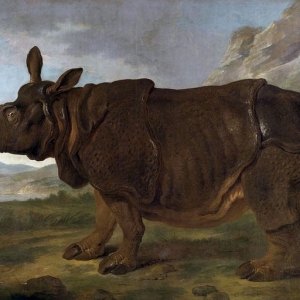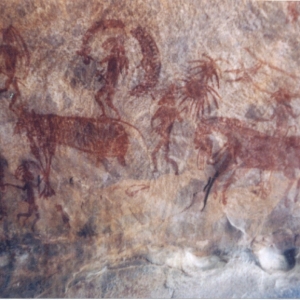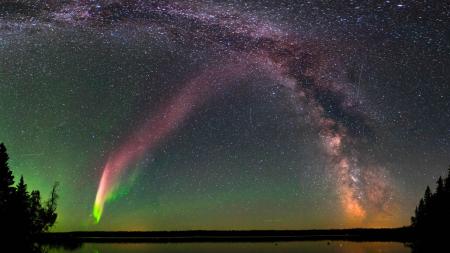Some of the most awesome sights in the night sky are the auroras, or northern and southern lights. These dazzling light shows appear as rippling curtains, bright arcs and diffuse glows. Most glimmer green, but some shine red, blue or purple. Such breathtaking displays are considered one of the natural wonders of the world. But few people ever see them. Why? Auroras largely appear in the skies of Earth’s remote polar regions. Understanding light and other forms of energy on the move They trace back to a stream of charged particles that continually flows out from the sun. This plasma is known as the solar wind. Earth’s magnetic field deflects most of the solar wind away from the planet. But that magnetic field snags some particles in the plasma gale. These high-energy charged particles travel along the magnetic field lines to Earth’s poles. There, the particles plunge into the atmosphere, smashing into oxygen and nitrogen atoms. Those collisions excite the oxygen and nitrogen. That is, they give the atoms a little extra energy. But excited atoms are not stable. They quickly relax into a non-excited — or ground — state. In the process, the atoms release energy in the form of light particles, or photons. These photons make up the auroras. Educators and Parents, Sign Up for The Cheat Sheet Weekly updates to help you use Science News for Students in the learning environment These lights dance across the sky above Earth’s poles in two oval-shaped zones. The northern lights, or aurora borealis, are most reliably visible to sky watchers in Alaska and Canada. The aurora borealis also shimmers above Greenland, Iceland and Norway. The southern lights, or aurora australis, can be seen over Tasmania, New Zealand and Antarctica. Auroras are rarely seen closer to the equator than at latitudes of about 70 degrees North or South. But sometimes the sun belches out an enormous plume of plasma. Such an intense burst is called a coronal mass ejection. These plumes can severely distort Earth’s magnetic field. And that can trigger intense auroras that extend much closer to the equator than normal. a pink and purple aurora shines in the night sky over a dark silhouette of trees Sometimes the sun launches a giant plume of plasma known as a coronal mass ejection. This can trigger intense northern lights that are visible in skies much farther south than usual. A coronal mass ejection in June 2015 set auroras aglow across the United States, as seen in this photo from West Virginia. NASA, COURTESY OF MICHAEL CHARNICK A variety of lights Auroras paint the sky hundreds of kilometers above the ground in a layer of the atmosphere called the thermosphere. An aurora’s color depends on the energy of the incoming charged particles. Low-energy particles can’t dive very deep into the atmosphere. They excite oxygen atoms at high altitudes — above about 240 kilometers (150 miles). Those oxygen atoms glow red. Explainer: Our atmosphere — layer by layer More energetic particles slam into oxygen at lower altitudes. These collisions happen around 100 kilometers (60 miles) to 240 kilometers above Earth. Due to the incoming particles’ higher energy, they cause oxygen atoms to emit higher frequency light. It appears green. The most energetic particles plunge below 100 kilometers. At such low altitudes, nitrogen atoms outnumber oxygen. Cascading particles cause the nitrogen to give off blue or purple light. That light will have an even higher wavelength than oxygen’s green glow. Auroras come in many shapes and sizes. Their features will depend on conditions of both the atmosphere and Earth’s magnetic field. One common auroral form is a tall curtain of light. These towering structures trace particles raining in from space. The particles are drawn down by disturbances in Earth’s magnetic field called Alfvén waves. A recently discovered type of aurora, named the dunes, includes a row of green stripes that run parallel to the ground (here, pointing to the left). Ripples in the magnetic field around Earth can kick pulses of charged particles into the atmosphere. A series of those pulses creates an aurora that flickers on and off. This fast-blinking aurora was spotted over Iceland in March 2015. A rarer aurora is known as the dunes. This type appears as a series of green bands parallel to the ground. Scientists think the green streaks come from ripples of gas in the atmosphere, which create a row of bands where oxygen is especially dense. Those bands glow bright green when incoming particles excite the tightly packed oxygen. Pulsating auroras, meanwhile, are glowing swaths of light. These patches of sky can span hundreds of miles. They repeatedly brighten and dim. This aurora is caused by undulations in Earth’s magnetic field called chorus waves. The waves periodically dump bunches of electrons into the atmosphere. That creates rhythmic flashes of light. STEVE sky glow The sky glow known as STEVE is a cousin to the auroras. Its bright smear of purple is formed by a torrent of charged particles rushing across the atmosphere. That plasma heats surrounding air particles to make them glow purple. NASA GODDARD SPACE FLIGHT CENTER, COURTESY OF KRISTA TRINDER Not all colorful lights in the night sky are auroras. Other sky glows include a ribbon of light called STEVE. That’s short for Strong Thermal Emission Velocity Enhancement. STEVE shimmers closer to the equator than auroras do. Its main feature is a purple smear that stretches east to west. Unlike auroras, that light is not produced by particles arriving from space. Instead, a river of plasma rushing through the atmosphere heats surrounding particles through friction. The hot, glowing particles drape the sky in purple. telescope images of Jupiter show ultraviolet auroras in blue over the planet's north pole Observations from NASA’s Hubble Space Telescope reveal the auroral lights that crown Jupiter. Hubble observed the auroras in ultraviolet light. That image is overlaid on a Hubble image of Jupiter taken in visible light. NASA, ESA, AND J. NICHOLS (UNIVERSITY OF LEICESTER) Auroras beyond Earth Auroras aren’t unique to Earth. These stunning phenomena can also develop on other planets with atmospheres and magnetic fields. Saturn and Jupiter’s auroras are so powerful that they heat up the gas giants’ atmospheres. This may explain why the planets are so warm, despite being so far from the sun. Jupiter’s moons Europa and Ganymede also sport auroras. Even Comet 67P/Churyumov-Gerasimenko has one. This space rock was visited by the European Space Agency’s Rosetta spacecraft. Comet 67P’s aurora forms when solar wind strikes molecules in the comet’s shroud of gas. It turns out that auroras are not just one of the natural wonders of our world — but a marvel on many other worlds, too. Power Words More About Power Words Alfvén wave: A type of magnetic wave that can develop in hot plasma. Antarctica: A continent mostly covered in ice, which sits in the southernmost part of the world. arc: A curve, often mapping out what appears to be part of a circle. atmosphere: The envelope of gases surrounding Earth, another planet or a moon. atom: The basic unit of a chemical element. Atoms are made up of a dense nucleus that contains positively charged protons and uncharged neutrons. The nucleus is orbited by a cloud of negatively charged electrons. aurora: A light display in the sky caused when incoming energetic particles from the sun collide with gas molecules in a planet’s upper atmosphere. The best known of these is Earth’s aurora borealis, or northern lights. On some outer gas planets, like Jupiter and Saturn, the combination of a fast rate of rotation and strong magnetic field leads to high electrical currents in the upper atmosphere, above the planets’ poles. This, too, can cause auroral “light” shows in their upper atmosphere. aurora borealis: Also known as the northern lights, this light display in the Northern Hemisphere sky is caused when incoming energetic particles from the sun collide with gas molecules in Earth’s upper atmosphere. comet: A celestial object consisting of a nucleus of ice and dust. When a comet passes near the sun, gas and dust vaporize off the comet’s surface, creating its trailing “tail.” crest: The highest part of a hill, a mountain or a swell of water. (in physics) The top, or highest point, in a wave. diffuse: adj.) To be spread out thinly over a great area; not concise or concentrated. (v) To spread light or to broadly release some substance through a liquid (such as water or air) or through some surface (such as a membrane). distort: (n. distortion) To change the shape or image of something in a way that makes it hard to recognize, or to change the perception or characterization of something (as to mislead). ejection: A sudden or forceful removal or jettisoning of something from its position, container or housing. electron: A negatively charged particle, usually found orbiting the outer regions of an atom; also, the carrier of electricity within solids. equator: An imaginary line around Earth that divides Earth into the Northern and Southern Hemispheres. Europa: One of the moons of Jupiter and the sixth-closest satellite to the planet. Europa, 1,951 miles across, has a network of dark lines on a bright, icy surface. excite: (in chemistry and physics) To transfer energy to one or more outer electrons in an atom. They remain in this higher energy state until they shed the extra energy through the emission of some type of radiation, such as light. field: (in physics) A region in space where certain physical effects operate, such as magnetism (created by a magnetic field), gravity (by a gravitational field), mass (by a Higgs field) or electricity (by an electrical field). frequency: The number of times some periodic phenomenon occurs within a specified time interval. (In physics) The number of wavelengths that occurs over a particular interval of time. friction: The resistance that one surface or object encounters when moving over or through another material (such as a fluid or a gas). Friction generally causes a heating, which can damage a surface of some material as it rubs against another. gale: A very strong wind at sea or coming off of the sea. To qualify as a gale, winds must be at least 51 to 102 kilometers per hour (32 to 63 miles per hour). gas giant: A giant planet that is made mostly of helium and hydrogen, which on Earth are gases. Jupiter and Saturn are gas giants. Greenland: The world’s largest island, Greenland sits between the Arctic Ocean and North Atlantic. Although it is technically part of North America (sitting just east of Northern Canada), Greenland has been linked more politically to Europe. Ice covers roughly 80 percent of Greenland. Indeed, the Greenland ice sheet is the world’s largest. If its frozen water were to melt, it could raise sea levels around the world by 6 meters (about 20 feet). Iceland: A largely arctic nation in the North Atlantic, sitting between Greenland and the western edge of Northern Europe. Its volcanic island was settled between the late 800s and 1100 by immigrants from Norway and Celtic lands (ones governed by the Scots and Irish). It is currently home to roughly a third of a million people. infrared: A type of electromagnetic radiation invisible to the human eye. The name incorporates a Latin term and means “below red.” Infrared light has wavelengths longer than those visible to humans. Other invisible wavelengths include X-rays, radio waves and microwaves. Infrared light tends to record the heat signature of an object or environment. Jupiter: (in astronomy) The solar system’s largest planet, it has the shortest day length (9 hours, 55 minutes). A gas giant, its low density indicates that this planet is composed mostly of the light elements hydrogen and helium. This planet also releases more heat than it receives from the sun as gravity compresses its mass (and slowly shrinks the planet). magnetic field: An area of influence created by certain materials, called magnets, or by the movement of electric charges. mass: A number that shows how much an object resists speeding up and slowing down — basically a measure of how much matter that object is made from. moon: The natural satellite of any planet. New Zealand: An island nation in the southwest Pacific Ocean, roughly 1,500 kilometers (some 900 miles) east of Australia. Its “mainland” — consisting of a North and South Island — is quite volcanically active. In addition, the country includes many far smaller offshore islands. nitrogen: A colorless, odorless and nonreactive gaseous element that forms about 78 percent of Earth's atmosphere. Its scientific symbol is N. Nitrogen is released in the form of nitrogen oxides as fossil fuels burn. It comes in two stable forms. Both have 14 protons in the nucleus. But one has 14 neutrons in that nucleus; the other has 15. For that difference, they are known, respectively, as nitrogen-14 and nitrogen-15 (or 14N and 15N). oxygen: A gas that makes up about 21 percent of Earth's atmosphere. All animals and many microorganisms need oxygen to fuel their growth (and metabolism). parallel: An adjective that describes two things that are side by side and have the same distance between their parts. In the word “all,” the final two letters are parallel lines. Or two things, events or processes that have much in common if compared side by side. particle: A minute amount of something. phenomena: Events or developments that are surprising or unusual. photon: A particle representing the smallest possible amount of light or other type of electromagnetic radiation. planet: A large celestial object that orbits a star but unlike a star does not generate any visible light. plasma: (in chemistry and physics) A gaseous state of matter in which electrons separate from the atom. A plasma includes both positively and negatively charged particles. (in medicine) The colorless fluid part of blood. plume: (in biology) A single large feather. (in environmental sciences) The movement of some gas or liquid, under the direction of gravity, winds or currents. It may be in air, soil or water. It gets its name from the fact that it tends to be long and relatively thin, shaped like a large feather. (in geology) Fluids (air, water or magma typically) that move, largely intact, in a feather-like shape over long distances. poles: (in Earth science and astronomy) The cold regions of the planet that exist farthest from the equator; the upper and lower ends of the virtual axis around which a celestial object rotates. (in physics and electrical engineering) The ends of a magnet. (in chemistry) two areas of opposite electrical charge, one positive and one negative. Saturn: The sixth planet out from the sun in our solar system. One of the two gas giants, this planet takes 10.6 hours to rotate (completing a day) and 29.5 Earth years to complete one orbit of the sun. It has at least 82 moons. But what most distinguishes this planet is the broad and flat plane of bright rings that orbit it. shroud: A cloth sometimes used in burials to cover the body. It can also mean any cover that drapes over something, hiding its details. Siberia: A region in northern Asia, almost all of which falls within Russia. This land takes its name from the language of the Tatar people, where Siber means sleeping land. This region is vast. It has become famous for its long, harsh winters, where temperatures can fall to −68° Celsius (−90° Fahrenheit). solar: Having to do with the sun or the radiation it emits. It comes from sol, Latin for sun. solar wind: A flow of charged particles (including atomic nuclei) that have been ejected from the surface of the star, such as our sun. It can permeate the solar system. This is called a stellar wind, when emitted by a star other than the sun. sun: The star at the center of Earth’s solar system. It is about 27,000 light-years from the center of the Milky Way galaxy. Also a term for any sunlike star. Tasmania: A major, mountainous island of Australia, south of the eastern part of the mainland across the Bass Strait. Until 1856, Tasmania had been known as Van Diemen's Land. Home to nearly 500,000 people, it’s capital city is Hobart. The name also refers to a state in Australia that comprises this island and several smaller ones. thermal: Of or relating to heat. (in meteorology) A relatively small-scale, rising air current produced when Earth’s surface is heated. Thermals are a common source of low level turbulence for aircraft. thermosphere: An upper region of the atmosphere that extends from 85 to 600 kilometers (53 to 372 miles) above Earth’s surface. In the thermosphere, temperature increases with height because of the sun’s energy. It's upper boundary is known as the thermopause. ultraviolet: A portion of the light spectrum that is close to violet but invisible to the human eye. unique: Something that is unlike anything else; the only one of its kind. velocity: The speed of something in a given direction. wave: A disturbance or variation that travels through space and matter in a regular, oscillating fashion. wavelength: The distance between one peak and the next in a series of waves, or the distance between one trough and the next. It’s also one of the “yardsticks” used to measure radiation. Visible light — which, like all electromagnetic radiation, travels in waves — includes wavelengths between about 380 nanometers (violet) and about 740 nanometers (red). Radiation with wavelengths shorter than visible light includes gamma rays, X-rays and ultraviolet light. Longer-wavelength radiation includes infrared light, microwaves and radio waves. X-ray: A type of radiation analogous to gamma rays, but having somewhat lower energy.
menu
menu
Menu









